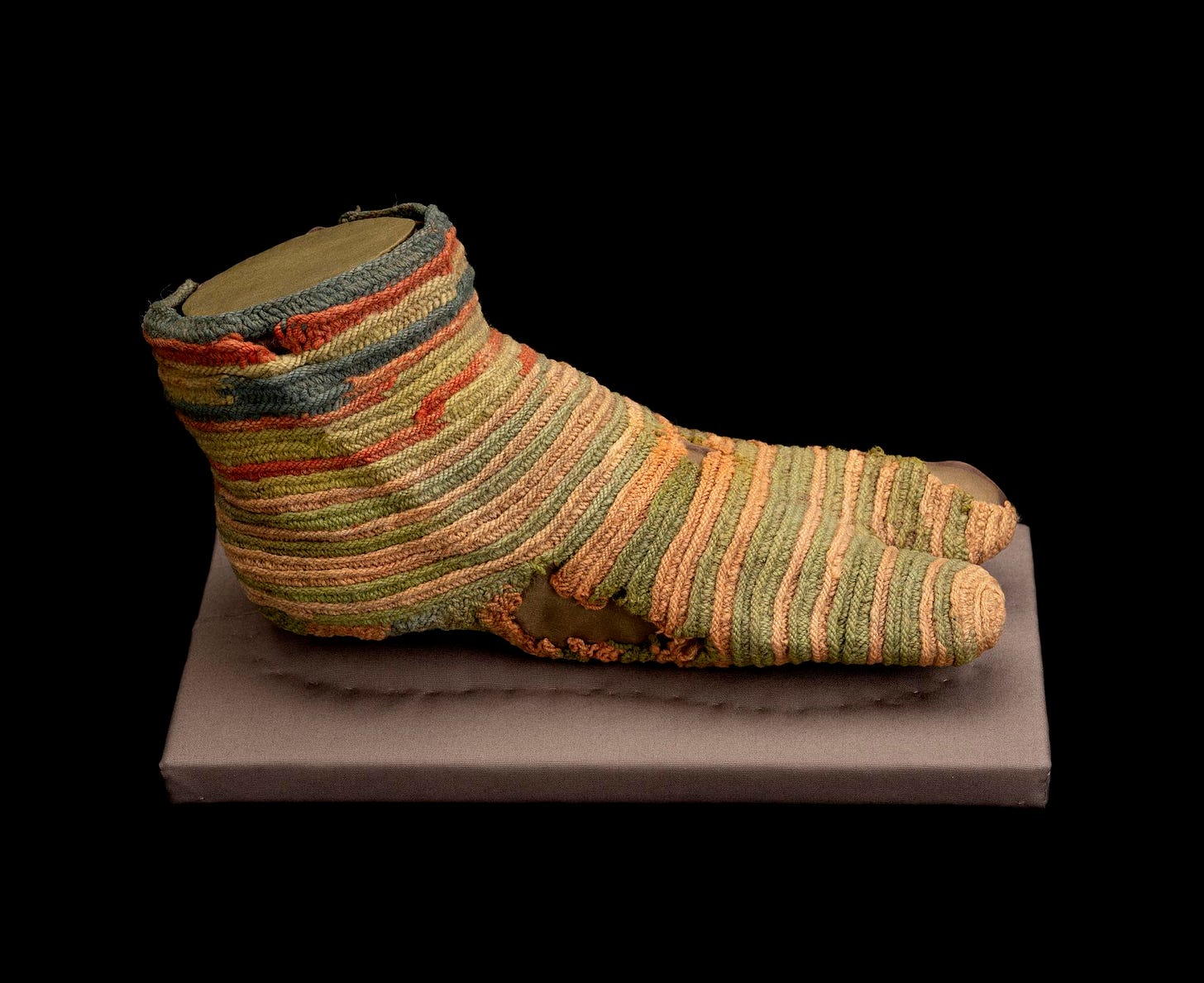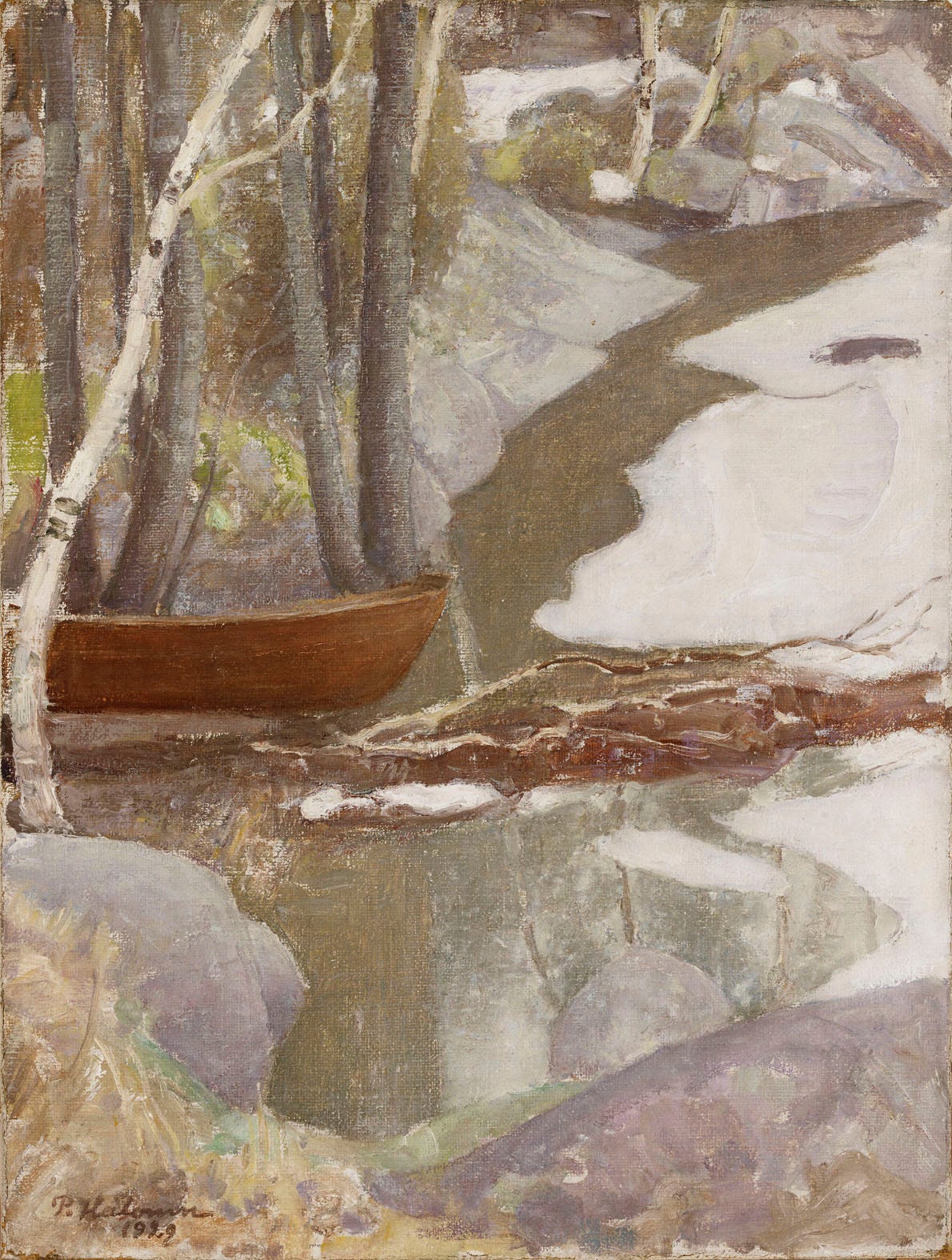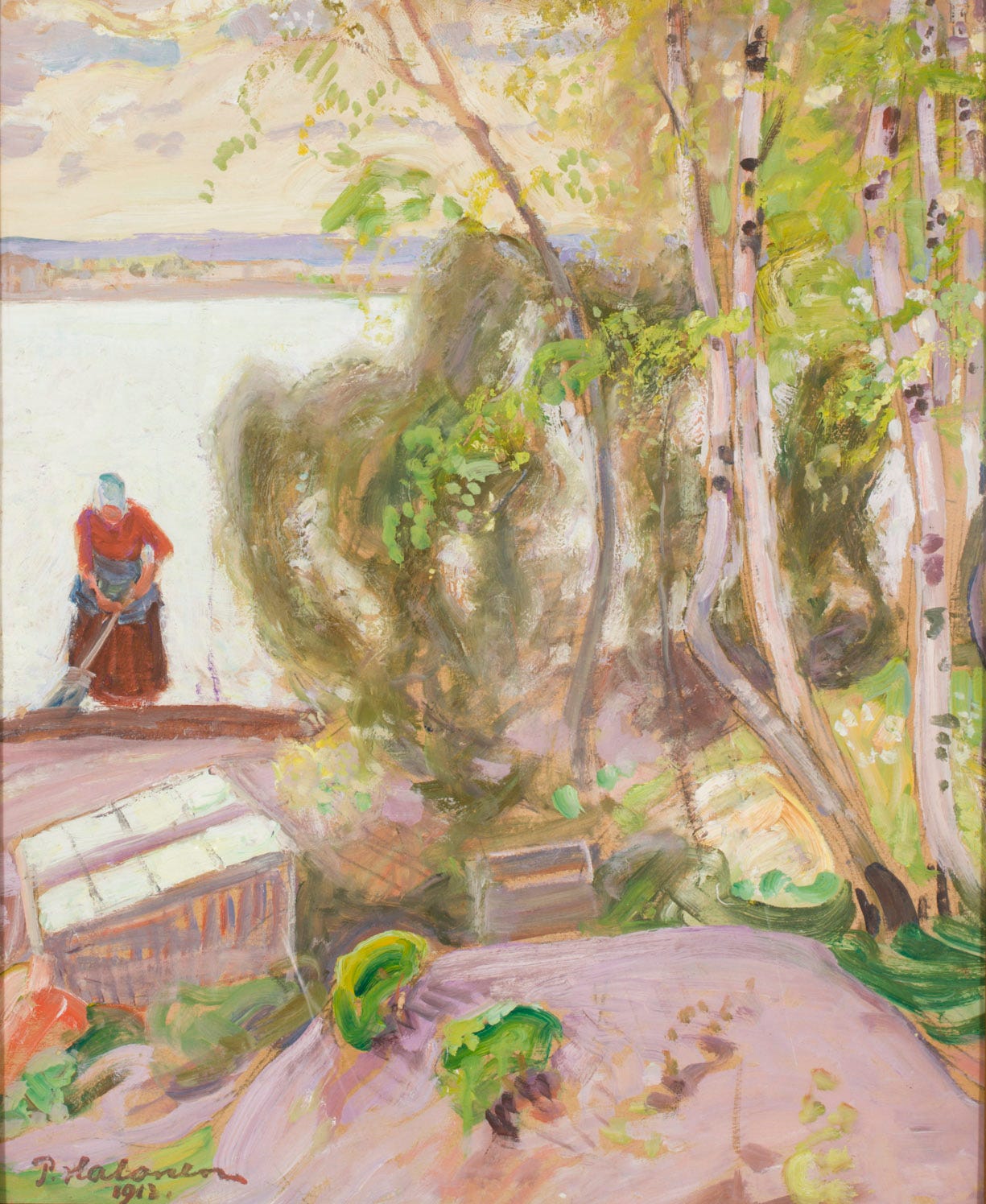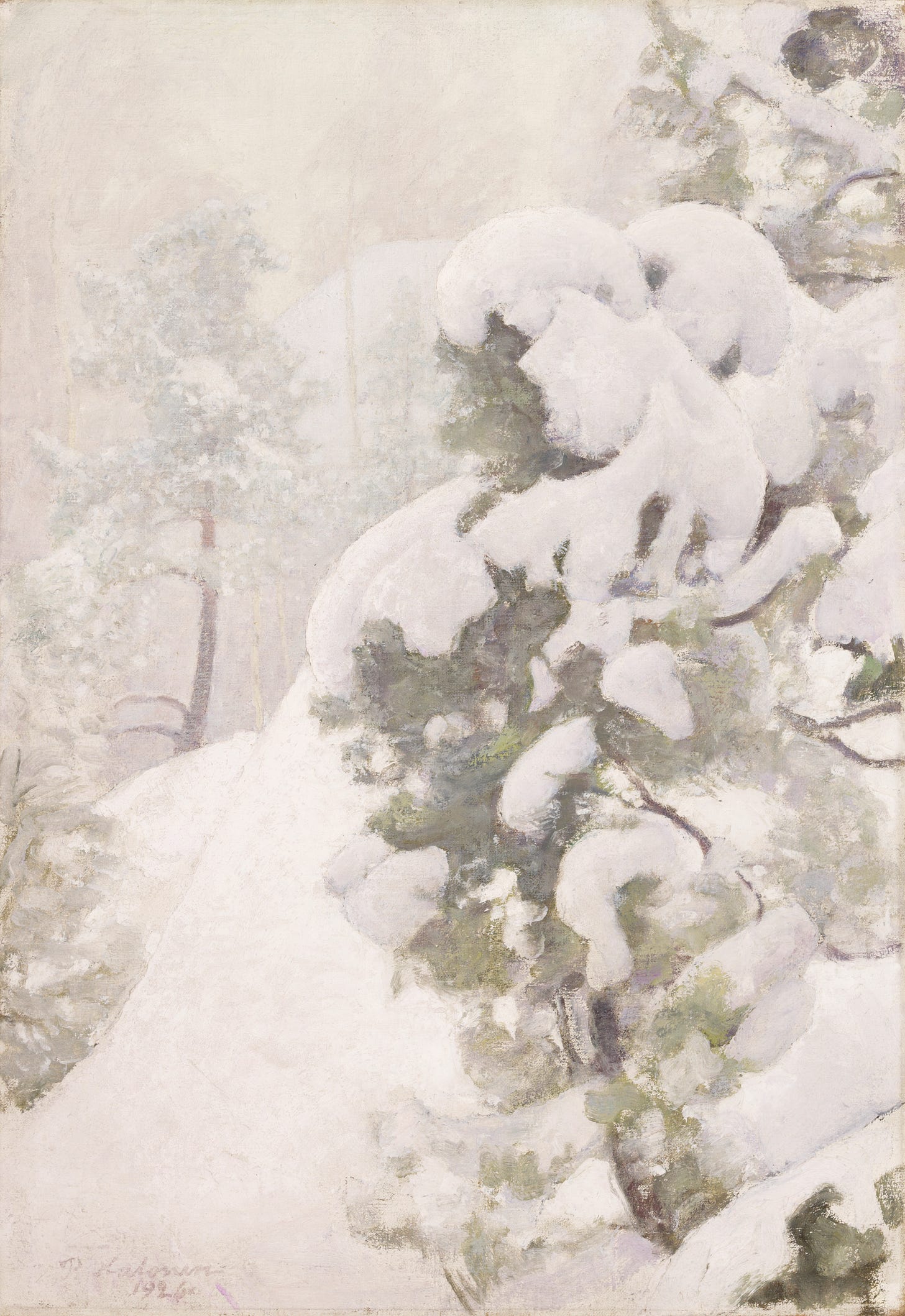Two-Toed Socks and Fairy Tales 🌷📜🌸
I have started to learn how to nalbind.
Nalbinding (Nålbinding) is the precursor to today’s knit and crochet: the oldest known “sock” is from 4th-5th century Egypt and was made using the technique now commonly called nalbinding. You’ll frequently spot two-toed socks and three-fingered mittens in art from the Middle Ages, and that is a fashion choice I don’t get.
I have aunts who wear barefoot socks (which have functionality I understand) here’n now in the 21st century. Are these two things related?
In my room are two dresser drawers filled with yarn and an old wooden trunk of wool roving and spinning supplies. I haven’t wanted to craft for fun for more than a year.
When we were preparing to film Flora, I was excited to make the material world of the short film filled with neat trinkets and callbacks to objects and styles I’d noticed in the months that led up to the film. And we had a deadline to finish all of the little projects. The time crunch was real. I happily stitched and carved and tore through fabric scraps and to-do list items.
From this short film, I learned that I like to have a greater purpose for a handiwork project: a way to use it as a piece toward a bigger goal.
A costume for a film. An object with frequent use in daily life.
It motivates me and it makes tedious work fun. :-)
So … this week I’ve wanted to be nalbinding. Not exactly for a project. Last month for a week I craved silence: no white noise, no music, just air and stillness and the soft hum of real life nearby. I want to nalbind for that same soft feeling. For the pleasure of the motion and feel—and a little bit of satisfaction from being one of those cool people who nalbind hats on roadtrips and wear them in the snow.
I’m also tickled pink that even though nalbinding is on the UK Red List of Endangered Crafts, it is being learned and brought to new life by re-enactors, LARPers, and historical enthusiasts all around the globe!
A Collection of Quotes
From last winter’s interest in fairy tales and folks who try to write like them
“When people told themselves their past with stories, explained their present with stories, foretold the future with stories … the best place by the fire, was kept for the storyteller.”
—Jim Henson’s The Storyteller
“Maybe it’s told by a woman who’s been saying to herself, ‘I’m sick. What would happen if I die? What would I be afraid of for my child?’ […] But even a story such as Jack and the Beanstalk, or The Brave Tailor, where the male protagonist is a little bit of a loser, the mother is able to say, ‘Listen, my son, you’re not all that you should be, but I tell a story in which good things happen to you anyway.’”
“That’s it exactly. And there’s a tremendous emphasis in fairy tales on pluckiness and cunning and quick wittedness.”
—from this excellent episode of the Bright Wings podcast, with Dr. Marina Warner
“Fairy tales offer enigmatic, terrifying images of what the prospects are, of the darkest horrors life may bring. Yet the stories usually imagine ways of opposing this state of affairs […] They are messages of hope arising from desperate yet ordinary situations.”
—Marina Warner
“A few things I think about, and struggle with, is trying to find a harmonious balance of certain opposites in my writing […] How do you create a balance of something that is rigorous and structured and clear but also has enigma and mystery and atmosphere?”
—Robert Eggers #
“Leonard Bernstein tells me more than the dictionary when he says that for him music is cosmos in chaos. That has the ring of truth in my ears and sparks my creative imagination. And it is true not only of music; all art is cosmos, comsos found within chaos.”
—Madeleine L’Engle, Walking on Water
“Claims by historians that they have identified Bluebeard or unearthed the first, authentic Snow White reveal a thirst for stable genealogies—something that can never be appeased. Snow White’s situation is historical and generic: it encapsulates fundamental dynamics of family life over a longue duree, unfortunately. […] Like ‘Bluebeard’, the fairy tale of ‘Snow White’ does not record a single, appalling crime, but testifies to a structural and endemic conflict in society that was political and social as well as personal, producing many, many instances of similar violence.”
—Marina Warner, Once Upon a Time
← can you spot the young Sean Bean?
Sarah Mackenzie: … There’s a lot of stories that I’m like, [her 10 year old twins who are sensitive readers] are not ready yet to bear this. I don’t know why that’s different than it was for their older brother or for their sister who’s about the same age.
But fairytales are different. There’s a different, they can handle a lot more scary fear in a fairytale than in another kind of a book. And so I think that’s partly too why they can transcend ages so much because as adults we’re still really interested in fairytales.
Sarah Arthur: Well, and maybe some of that, I’m just extrapolating here from what you just said because I have two very different children and one of them is similar, but he can just absorb fairytales, no problem.
And I wonder if some of it is the narrator voice to a fairytale is like that protective grownup who’s there making sure you’re going to be okay. It’s kind of a more omniscient voice, which is one of the reasons why I’m not sure fairytales always translate to film very well unless you have a narrator. Whereas in, for example, The Lion, the Witch and the Wardrobe, Lucy and Susan watch what happens to Aslan, but Lewis shields you from it a bit. He’s not going to let you see the moment when the knife comes all the way down. Whereas in the movie, the watchers of it are, we’re not shielded from that moment.
And so I wonder if the narrator serves to give us a little distance and a little sense of being protected by a safe grownup.
“The meaning [of the tales] has long ago been lost, but it is still felt, giving the tale its substance, while at the same time satisfying our pleasure in the marvellous. They are never merely the shimmering colours of insubstantial fantasy.”
—Jacob and Wilhelm Grimm
Music from This Week:
Woman on the Internet by Orla Gartland
P.S. I don’t have a solid update for you after last week’s ambitious claims. The brainstorm (really more of a gentle flurry) goes on.
Thank you for reading Loch Ness Robots today. :-)










